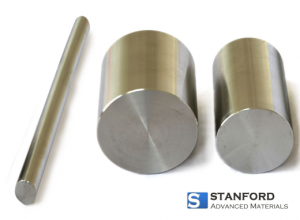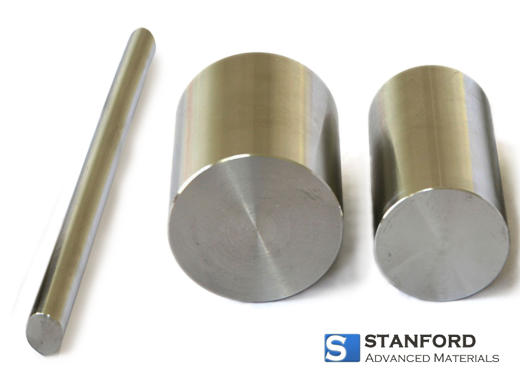As a rare metal, zirconium is widely used in the fields of aerospace, military industry, nuclear reaction and atomic energy due to its remarkable corrosion resistance, extremely high melting point, ultra-high hardness, and strength.
The surface of zirconium is easy to form a glossy layer of the oxide film, so its appearance is similar to that of steel. Zirconium is resistant to corrosion but dissolves in hydrofluoric acid and aqua regia, and it can react with non-metallic elements and many metallic elements to form a solid solution at a high temperature. Zirconium has good plasticity and is easy to be processed into zirconium plate and zirconium wire. Besides that, zirconium can absorb a lot of gases such as oxygen, hydrogen, and nitrogen when heated, and can be used as hydrogen storage material. Zirconium and hafnium are two metals with similar chemical properties, which are symbiotic and contain radioactive materials.

The zirconium can absorb nitrogen violently when the temperature exceeds 900 degrees Celsius. At 200 degrees Celsius, 100 grams of metal zirconium can absorb 817 liters of hydrogen, equivalent to more than 800,000 times the hydrogen absorption capacity of iron. This characteristic of zirconium has been widely used. In the electric vacuum industry, for example, zirconium powder is coated on the surfaces of the anodes and other heated parts of the electric vacuum elements and instruments to absorb the residual gas in the vacuum tube, thus making the vacuum tube and other vacuum instruments, which have better quality and longer service life.
Zirconium can also be used as a “Vitamin” in the metallurgical industry, playing a powerful role in deoxygenation, nitrogen removal, and sulfur removal. For example, if a thousandth of zirconium is added to steel, its hardness and strength will increase dramatically. Zirconium-containing armor steel, stainless steel, and heat-resistant steel are important materials for the manufacture of defense weapons such as armored vehicles, tanks, artillery and bulletproof panels. When zirconium is mixed into copper and drawn into copper wire, its electrical conductivity does not weaken but the melting point is greatly improved, so it is very suitable to be used as a high-voltage wire. Zinc-magnesium alloys containing zirconium, which are light and high temperature resistant, are twice as strong as conventional magnesium alloys and can be used in the manufacture of jet engine components.
Zirconium alloy is a nonferrous alloy that is composed of zirconium as the matrix and other elements are added, and the main alloy elements are tin, niobium, iron, and so on. Zirconium alloys have good corrosion resistance, moderate mechanical properties, low atomic thermal neutron absorption cross-section, and good compatibility with nuclear fuel in the high-pressure water and steam of 300 ~ 400 ℃, which is mainly used as core structure material of water-cooled nuclear reactors. Besides that, zirconium has excellent corrosion resistance to a variety of acids, bases, and salts, and has a strong affinity with gases such as oxygen and nitrogen, and they are also used in the manufacture of corrosion-resistant and pharmaceutical mechanical components, as well as the non-evapotranspiration disinfectant in the electric vacuum and light bulb industries.
Stanford Advanced Materials supplies high-quality zirconium products to meet our customers’ R&D and production needs. Please visit http://www.samaterials.com for more information.
